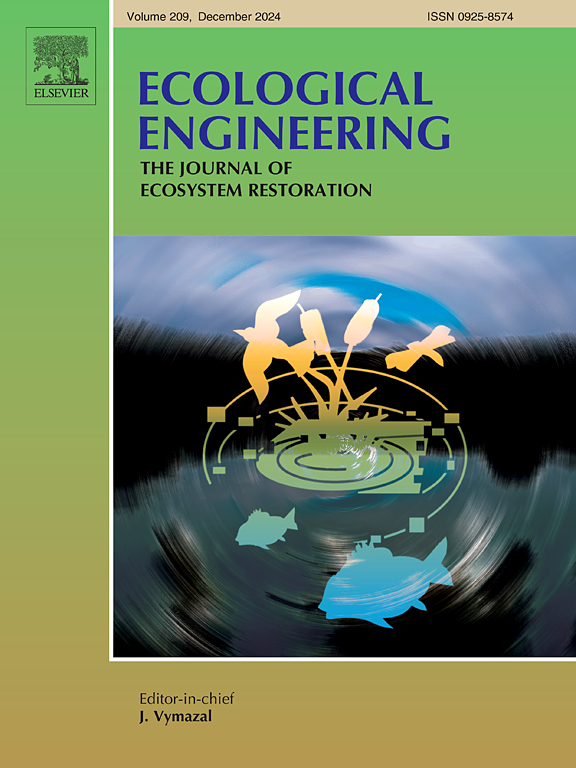Impacts of flood retention dams on benthic invertebrates by affecting bed material size and disturbance in reservoir and downstream sections
IF 3.9
2区 环境科学与生态学
Q1 ECOLOGY
引用次数: 0
Abstract
The impacts of Flood Retention Dams (FRDs), designed solely for flood control and featuring bottom outlets at the riverbed level, on benthic invertebrate communities have not been sufficiently elucidated. This study investigated the impact of FRDs on benthic invertebrate communities downstream and reservoirs, focusing on differences in riverbed conditions and bed disturbances caused by reservoir sedimentation. We compared benthic invertebrate communities and riverbed conditions at upstream, reservoir, and downstream sites from seven FRDs in Japan. The average community similarity between the upstream and downstream sites across the seven dams was 0.73, comparable to unregulated streams. They were not related to the duration of dam operation, indicating minimal long-term impacts on downstream communities. However, the community similarity between the upstream and reservoir sites was notably lower, at 0.66. Reservoir sites had smaller grain sizes and softer substrates with narrower interstitial spaces than upstream sites. Consequently, taxes that inhabit or move across stone surfaces were more common in reservoirs. Conversely, taxa that prefer stable beds and larger body sizes were less frequent. Additionally, we found that reservoir sedimentation fluctuations, which indicates riverbed disturbance pattern, influence the similarity of invertebrate communities between upstream and downstream sites. To conclude, FRDs have negligible impacts on benthic invertebrate communities at DS sites; smaller grain sizes modulate these communities at RS sites. Predicting reservoir sedimentation fluctuations supports the design of FRDs with minimal impacts on benthic invertebrates.
求助全文
约1分钟内获得全文
求助全文
来源期刊

Ecological Engineering
环境科学-工程:环境
CiteScore
8.00
自引率
5.30%
发文量
293
审稿时长
57 days
期刊介绍:
Ecological engineering has been defined as the design of ecosystems for the mutual benefit of humans and nature. The journal is meant for ecologists who, because of their research interests or occupation, are involved in designing, monitoring, or restoring ecosystems, and can serve as a bridge between ecologists and engineers.
Specific topics covered in the journal include: habitat reconstruction; ecotechnology; synthetic ecology; bioengineering; restoration ecology; ecology conservation; ecosystem rehabilitation; stream and river restoration; reclamation ecology; non-renewable resource conservation. Descriptions of specific applications of ecological engineering are acceptable only when situated within context of adding novelty to current research and emphasizing ecosystem restoration. We do not accept purely descriptive reports on ecosystem structures (such as vegetation surveys), purely physical assessment of materials that can be used for ecological restoration, small-model studies carried out in the laboratory or greenhouse with artificial (waste)water or crop studies, or case studies on conventional wastewater treatment and eutrophication that do not offer an ecosystem restoration approach within the paper.
 求助内容:
求助内容: 应助结果提醒方式:
应助结果提醒方式:


